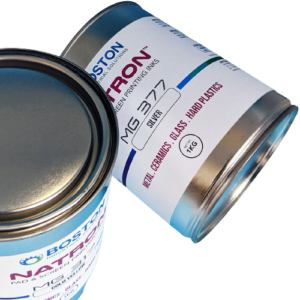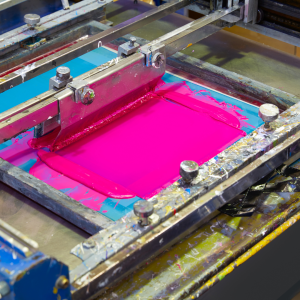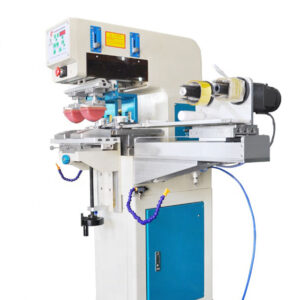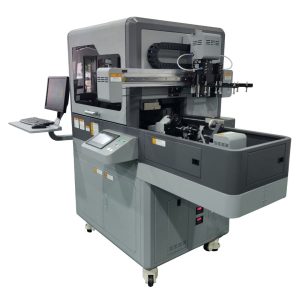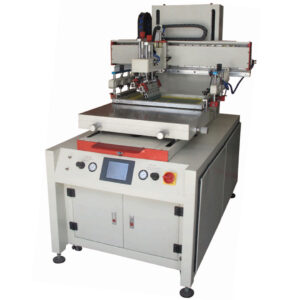Silicone screen printing vs. pad printing
Both screen printing and pad printing processes use silicone ink to print on silicone rubber. This is due to the similarities between solvent-based printing inks and silicone inks. However, there are also differences between these two types of inks. Visit our pad printing ink page to learn more about pad printing inks.
Silicone rubber is a unique material that has many useful properties, such as heat resistance, biocompatibility, etc. For these and many other reasons, many industries use this material in their applications. However, standard UV-curable ink and solvent-based inks do not adhere to silicone. As a result, to print on silicone, you need special ink. Silicone-based ink is the only one that can stick to silicone. And, unlike solvent-based inks, silicone ink requires heat to dry and cure.
Boston Industrial Solutions, Inc. provides a variety of silicone inks for decorating fabrics and silicone rubber materials. Our inks have higher opacity than any other inks on the market. Irrespective of the material, our inks are durable and have high resistance to scratching, bending, stretching, chemicals, and fading.
Pad printing with silicone ink.
Pad printing Like any other pad printing job, use silicone ink. The decorator mixes the ink, catalyst, and silicone solvent. Then, using a pad printing machine, the operator prints on the silicone rubber. After printing, place the items in an oven to dry.
In cases where the design calls for printing two colors, the first color must dry before printing the second color. The amount of time and temperature required to dry the silicone ink depends on the density of the silicone rubber. Silicone products made with dense silicone molecules will require more heat compared to simple, less dense silicone materials. E.g., silicone swim caps require higher temperatures compared to silicone wristbands. Additionally, if the silicone has a soft silicone touch coating, it will require more heat and time to dry. Manufacturers apply a low-friction silicone coating to the majority of functional silicone products.
It is crucial to monitor the silicone pad for any signs of silicone ink buildup on the silicone rubber over time. Over time, silicon ink will stick to silicone rubber. Therefore, it is important to clean the pads. Read more about when to change a pad printing pad.
Consumables for pad printing include plates, an ink cup with an inkcup ring, solvents, and pad printing pads.
Silicone screen printing ink
The term silicone screen-printed ink is complex, as it is used in both textiles and rubber-silicon inks. You may want to know what silicone screen printing ink is.
Silicone screen printing inks encompass both textile silicone inks and rubber silicone inks. While this term is interchangeable, it is important to note the differences in application. Generally, silicone screen printing ink for rubber is runny (has a low viscosity) compared to textile screen printing ink. For this reason, rubber inks require a tight mesh count of 230–310 mesh, whereas textile inks use 80–200 mesh screens. Additionally, the inks for rubber have high tensile strength and can handle more heat compared to those for textiles. We will delve into this topic later. For now, please keep your application in mind before choosing ink. Boston Industrial Solutions, Inc. is the only company in the world that makes and sells silicone screen printing inks for both textile and rubber applications. Learn more about silicone ink for rubber and silicone inks for screen printing on textiles.
Boston Industrial Solutions, Inc. silicone printing ink lines
SE Series ink
Boston Industrial Solutions, Inc., formulated the SE series pad printing ink for silicone rubber. This ink has high flexibility and is the world’s best for printing on silicone rubber. The SE Series has extremely high opacity, gloss, quick drying, and is the only ink that adheres to silicone rubber. Also, this ink line comes with over 40 standard colors to choose from, including metallic shades. Additionally, all colors are intermixable to create new shades.
DC Series ink
The DC series ink line prints on silicone products bonded with plastic parts that cannot withstand high heat. This ink line dries quickly and at much lower temperatures. Additionally, this ink will also air dry. Like the SE Series, the SI Series ink is two-component.
Screen printing textiles with silicone inks
Our SilTex ink line has several inks for printing on textiles, depending on the application and desired finish. These ink lines include:
- HD Series—an excellent screen-printing ink to replace plastisol inks. The SilTex HD inks are PVC-free and have an expensive feel and look.
- GR Series—this ink has very high gloss and round finish prints.
- AS Series—designed for printing on socks with high friction and a gloss finish.
- XF Series—formulated to provide a clear finish on textiles. Use this finish to enhance the gloss on the HD Series. XF has high tensile strength and gloss.
We will review these and other silicone ink lines in detail later.
Screen printing vs. pad printing silicone: which should I choose?
The best printing method, as a rule of thumb, is the one that best suits your application. The material (substrate) dictates the printing process. For example, if you are printing on textiles, screen printing is the best printing method for this application. Pad printing, on the other hand, is excellent for printing on hard goods.
Additionally, when printing on silicone rubber, screen printing is excellent for printing 360° around a cylindrical object. Pad printing, on the other hand, is excellent for printing up to 90° around an object.
Lastly, the pad printing process is excellent for printing small logos on odd-shaped goods. Screen printing, on the other hand, is excellent for printing large logos on flat items.
For additional information, please contact us, visit our support hub, or visit our YouTube channel to learn more about the latest printing technologies. Check out silicone printing applications.


